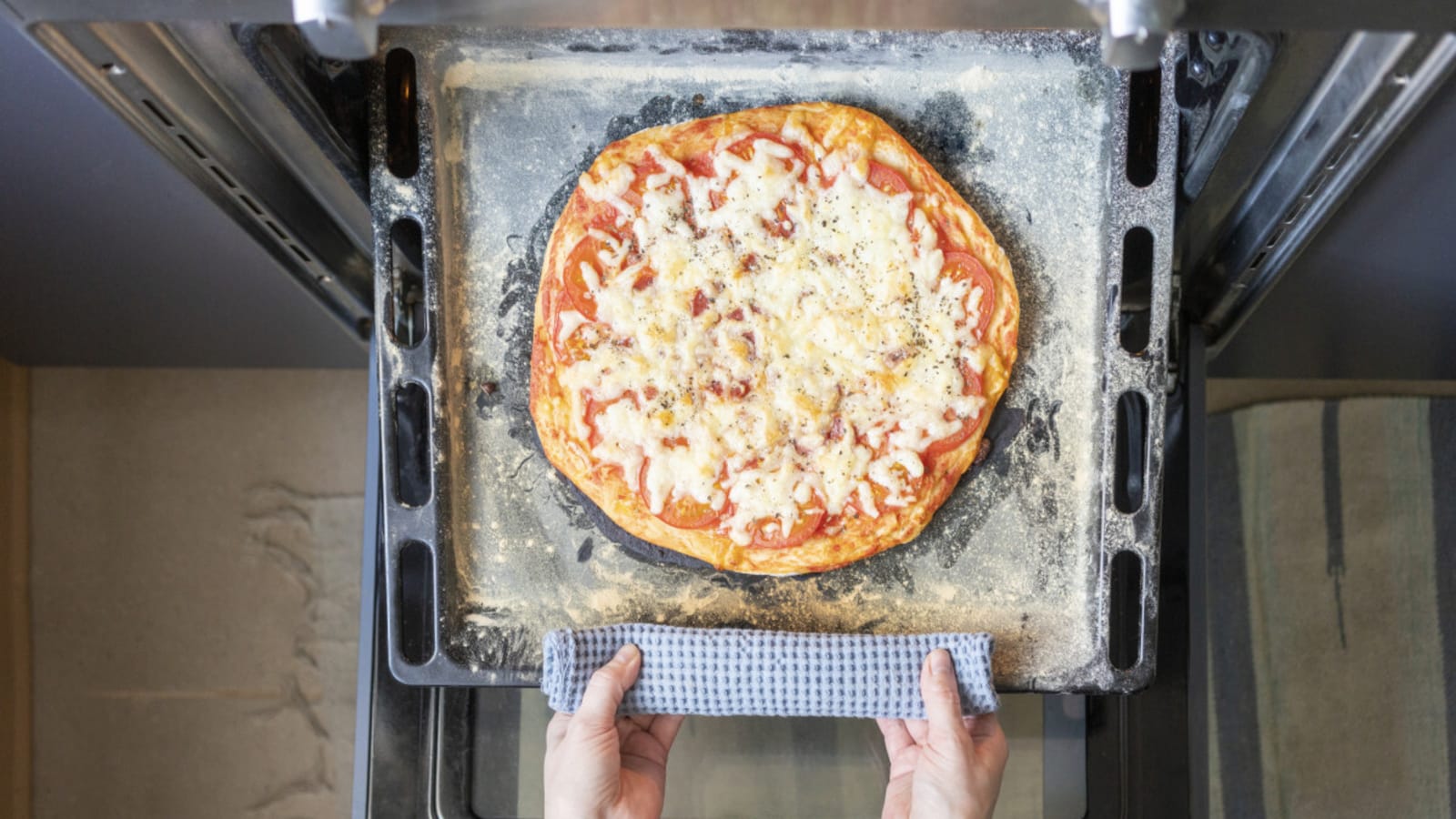
Baking steels (aka a pizza steel aka bread steel) is the holy grail for pizza lovers and serious bakers. If you've used the OG or a similar design, you'll agree: it offers unmatched heat retention and the crispiest crusts that mimic those from a wood-fired oven.
Unlike baking stones, which can be more delicate and prone to cracking, a baking steel is ultra-durable, either made from stainless steel or food-grade A36 steel, and is unyielding to a high-heat environment.
Whether you’re crafting homemade pizzas, bread, or flatbreads, this kind of tool is a reliable partner for perfectly baked treats. But just like any trusted kitchen tool, it needs the right care to keep delivering top-notch results.
Best Practices for Using a Baking Steel
- Preheat Thoroughly: Give your steel time to fully preheat in the oven. This can take 45 minutes to an hour, but the difference in your crust will be worth the wait.
- Avoid Excess Moisture: Keep wet or heavily sauced items in check, as excess moisture can cause sticking. A light dusting of flour or cornmeal on the surface before adding the dough helps with release and adds a lovely texture.
- Handle with Care: Steel is heavy! Always lift and position it carefully, especially when it’s hot, to avoid accidental drops or burns.
- Cool Gradually: Let your baking steel cool in the oven before removing it after use. Sudden temperature shifts can cause the steel plate to warp over time.
How to Clean a Baking Steel
1. Prep New Steel
- Soak to Remove Mill Scale: A brand new steel slab often has a blue-grey surface scale from the manufacturing process. Submerge the steel in equal parts white vinegar and water for 24 hours.
- Rinse and Scrub: A lot of the scale should wash away immediately. Gently scrubbing with steel wool will remove the rest. Rinse again. (If your steel has sharp edges, smooth them out now with a piece of sandpaper).
- Bake to Dry: Put the steel on the middle oven rack at a very low heat (170F) for a couple of minutes to dry. Remove from oven until cool enough to handle.
- Seasoning Process: Wipe the dry piece of steel with a thin layer of flax seed oil or avocado oil. Buff it with lint-free towels. Put it back on the middle rack of the oven and bake at 170F for an hour.
2. Routine Cleaning After Each Use
- Scrape Off Debris: Once the steel has cooled to a manageable temperature, use a metal spatula or bench scraper tool for cleaning off any food particles or bits of charred crust.
- Wipe Clean with a Damp Cloth: Using a soft, damp cloth, wipe away any remaining crumbs or residue. Avoid submerging or soaking the steel, as excessive contact with water can lead to rust.
- Dry Thoroughly: After wiping, dry the steel immediately with a clean towel to avoid any moisture lingering on the surface.
- Light Oil Coat (Optional): If your steel appears dry, apply a tiny dab of neutral oil (like vegetable or canola) to the surface and wipe with a paper towel until no excess remains. This maintains its seasoning and prevents rust.
3. Deep Cleaning for Stubborn Stains
- Cool and Scrape: As with routine cleaning, ensure your steel is at an ambient temperature. Use a stiff brush to remove any stuck on food residue, focusing on hardened spots.
- Use Baking Soda Paste: Mix a small amount of baking soda with water to form a paste. Rub this on the stubborn spots, letting it sit briefly to lift stains.
- Wipe with Damp Cloth: Wipe away the paste with a damp cloth, repeating if necessary.
- Dry Immediately: Dry thoroughly to prevent rust.
4. Continual Care:
- Reapply Oil as Needed: Add a light oil coating as the final step to restore the steel’s protective layer. Like with cast iron, a well seasoned surface creates a non-stick patina over time.
- If Rust Spots Do Appear: Gently rub with steel wool, wash in a mild soapy water. Dry completely and reapply an oil layer.
Pizza Stone vs. Baking Steel
Baking steels are made from steel, giving them superior heat conductivity and the ability to retain the correct temperatures longer than a pizza stone (aka bread stone). This translates to faster cooking times and a crispy bottom crust normally achieved only in a pizza oven. Pizza stones, often made from ceramic or cordierite, require time for preheating and are less durable, prone to cracking if handled roughly or exposed to sudden temperature changes. Your preference may come down to your preferred pizza style.
How often do I need to season my baking steel?
Assuming you avoid saucy spills and keep your baking steel dry, it should only need seasoning once every few months or whenever you notice it looking dry or dull. Seasoning keeps the baking surface non-stick and rust-free, but you should apply a light coating of oil over the entire thing, not just the actual cooking surface. Make sure it's rubbed evenly and heated slowly to restore its shine and performance. Avoid overdoing it; a thin coat is all it takes to keep your baking steel ready for action.
More must-reads:
- Five worst signings from the first day of NHL free agency
- Guardians pitcher target of sports betting investigation
- The 'Leading scorer by NBA franchise' quiz
Breaking News
Trending News
Customize Your Newsletter
 +
+
Get the latest news and rumors, customized to your favorite sports and teams. Emailed daily. Always free!








